Ricinus Communis Castor Oil Seeds
Ricinus Communis commonly known as Castor oil seeds have distinctive features. They are 9-11 mm long, compressed, ellipsoid in shape, smooth, shiny, molted in various shades ranges from white, brown, maroon, grey and blackand have a brittle shining seed coat. They have unique pattern of stripes and each seed has a different patterns of seed coat. Under the seed coat, there lies a soft and oily endosperm which stores oil in it. The endosperm is white and copious. The plant produces maximum viable seeds annually approximately 400-3000 kg/ha with high germination rates (83-90%) and cultivated chiefly in Pakistan, India, China and Brazil for the production of castor oil. They remain viable for 2 to 3 years and used in many industrial applications.
Ricinus Communis ( Castor oil ) Plants
Ricinus communis L. (Euphorbiaceae) commonly known as castor, is an evergreen, fast growing glabrous shrub or small tree. It is found invasive or as weed in many countries andnative to North-Eastern Africa (Somalia and Ethiopia). It is commonly called castor bean or castor oil plant. It is usually 1-5 m tall. The roots are strong (Tap-root) and has prominent lateral roots. The stem is green, comprising nodes, petioles and inflorescences axes. The leaves are dark green, spirally arranged on branches, palmate in shape with acuminate serrate lobes. Each leaf varies in size ranges between 3.5-50 cm long and 10-70 cm wide. The panicles are terminal, erect, up to 40 cm long and glaucous. The flowers borne within 6 months of germination and are unisexual. The male flowers are present towards the base while female flowers are present towards the top. The flowers are short, pedicelled and 1-1.5 cm in diameter. The corolla is absent and 3-5 calyx lobes are present which are acute in shape. The male flowers consists of many bundles of stamens while female flowers consists of 1-ovuled cell superior ovary and 3 styles. The fruit is 15-25 mm long, spiny, greenish to reddish brown in colour, ellipsoid to sub-globose in shape. Each fruit comprises numerous seeds.
Ricinus Communis ( Castor oil ) Uses
The most important product of castor plant is castor seed oil which is translucent liquid with a yellow tint. The seeds contain 40-60% oil which is rich in ricinolein and triglycerides. The oil also contain ricin which is a water- soluble toxin. It is widely used in medicines, since from the introduction of electricity to the world. It is mostly used as a laxative and purgative which helps to speeds up digestion process and clean parasites of intestine. It is also applied externally on skin for the treatment of various sores, wounds and infections.It is used in the treatment of acne, psoriasis and dermatosis. It also helps in growth of hairs including eyelashes. It is also used as biodiesel and has commercial importance of making soap, paints, margarine, inks, adhesives, cosmetics, chocolate, hydraulic brake fluids, waxes, varnishes, synthetic resins, plastics, lubricants,fuel, fertilizerand linoleum.
Ricinus Communis ( Castor oil ) Uses and Benefits
Every part of plant (leaves, stems, roots, flowers, fruit and seeds) has numerous medicinal uses and contains various phytochemicals such as terpenoids, steroids, alkaloids, flavonoids, saponins, glycosides and lectins. The powder of leaves is used to repel mosquitoes, aphids, whiteflies and rust mites. It is also used to increase the production of milk in mammals especially in cattle and humans. A distillation of leaves are good for relieving stomachache and used as an eye lubricant. The roots are used as purgative and provide relieve from toothache when used in the form of decoction or paste. Jewelry such as bracelets and necklaces are often made from castor bean seeds due to its fascinating appearance.
Ricinus Communis ( Castor oil ) Plants toxicity
Castor plant is extremely poisonous to human and animals if ingested the broken castor seeds while its pollen causes respiratory allergies in humans. The oil-rich seeds contained poison ricin and ricinine which is one of the most toxic substances and can be lethal if seeds are chewed. According to Guinness World Records, this plant is most common poisonous plant. It causes diarrhea, hypotension, nausea and tachycardia that persist up to a week or few days if overdose is taken.This oil act as a natural insecticide, fungicide and a source of undecylenic acid. Commercially available castor oil is not toxic to humans in normal doses.
Ricinus Communis ( Castor ) Plants Requirements
Castor plant is a very adaptable as along day plant. It can grow in arid and semi-arid soils with poor retention ability and low nutrient level. The best soil pH for its growth is between acidic to alkaline (4.5-8). It prefers to grow in warm temperate and tropical regions at an elevation of 2000 m from sea level. It generally prefers sunny areas with high temperature and the optimum temperature should ranges between 10-18˚C although, it can also tolerate minimum temperature of 15°C and a maximum of 38°C. It required low humidity and do not flourished in highly temperate areas due to its less tolerance to high frost conditions. The plant is susceptible to some infections like rots, rust and leaf-spot diseases. It is also susceptible by the attack of bugs like mirids and peach moth on inflorescence.

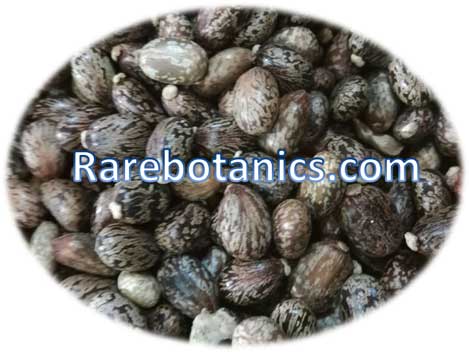
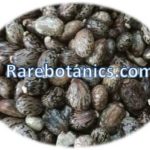
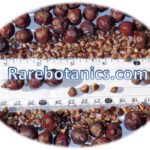
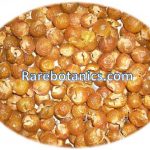
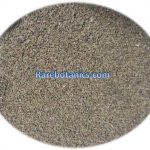

Reviews
There are no reviews yet.